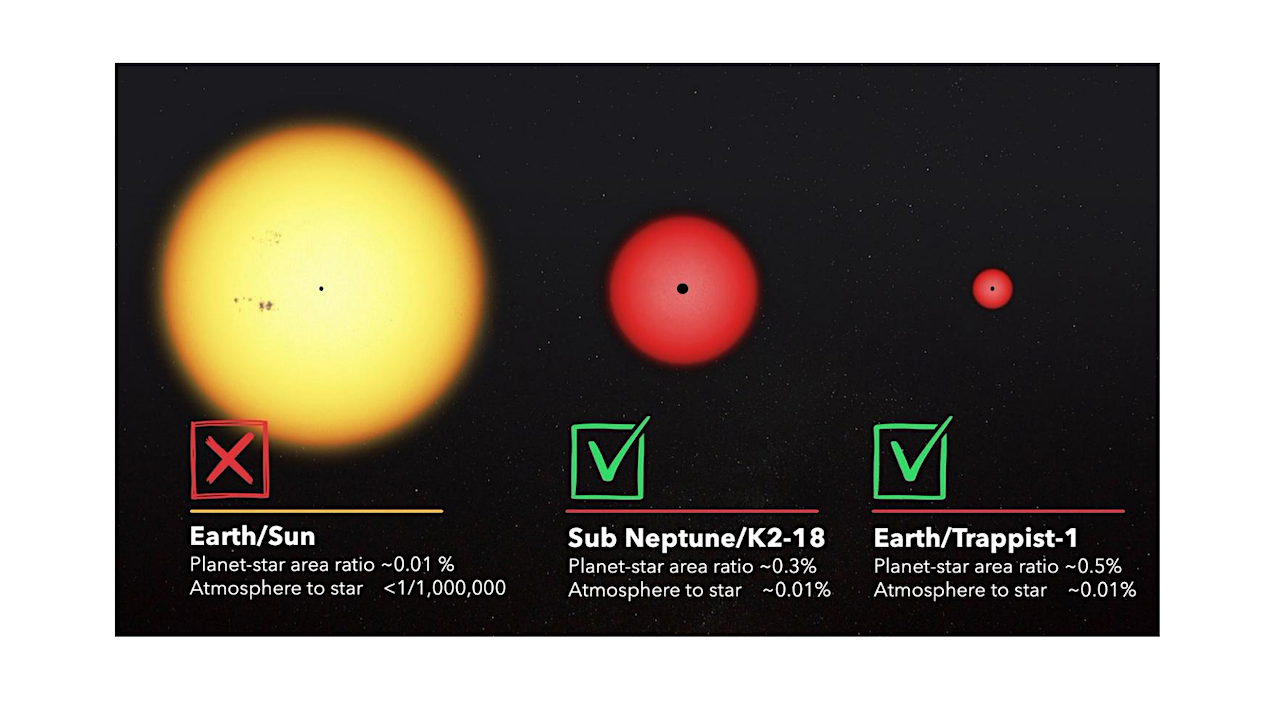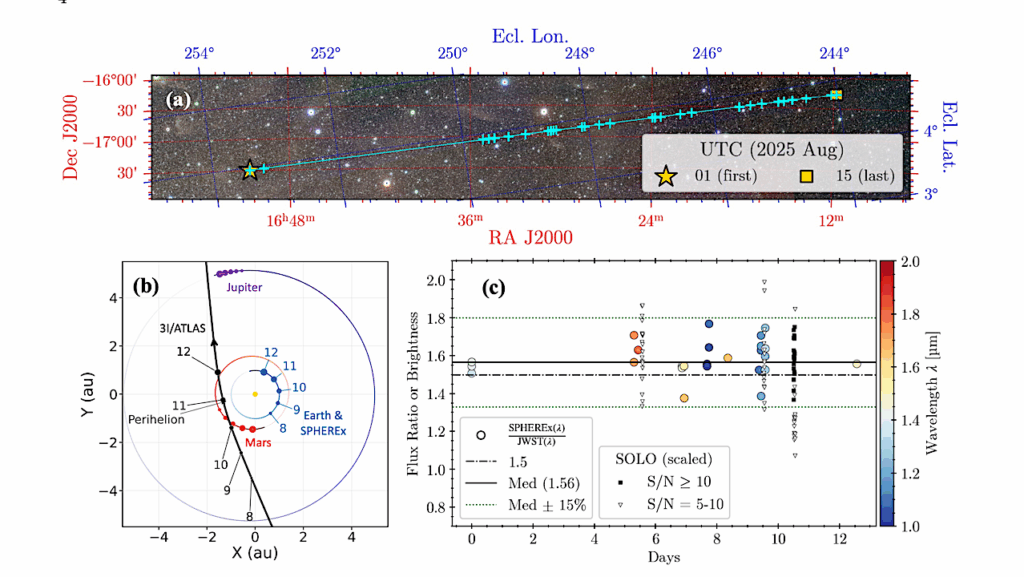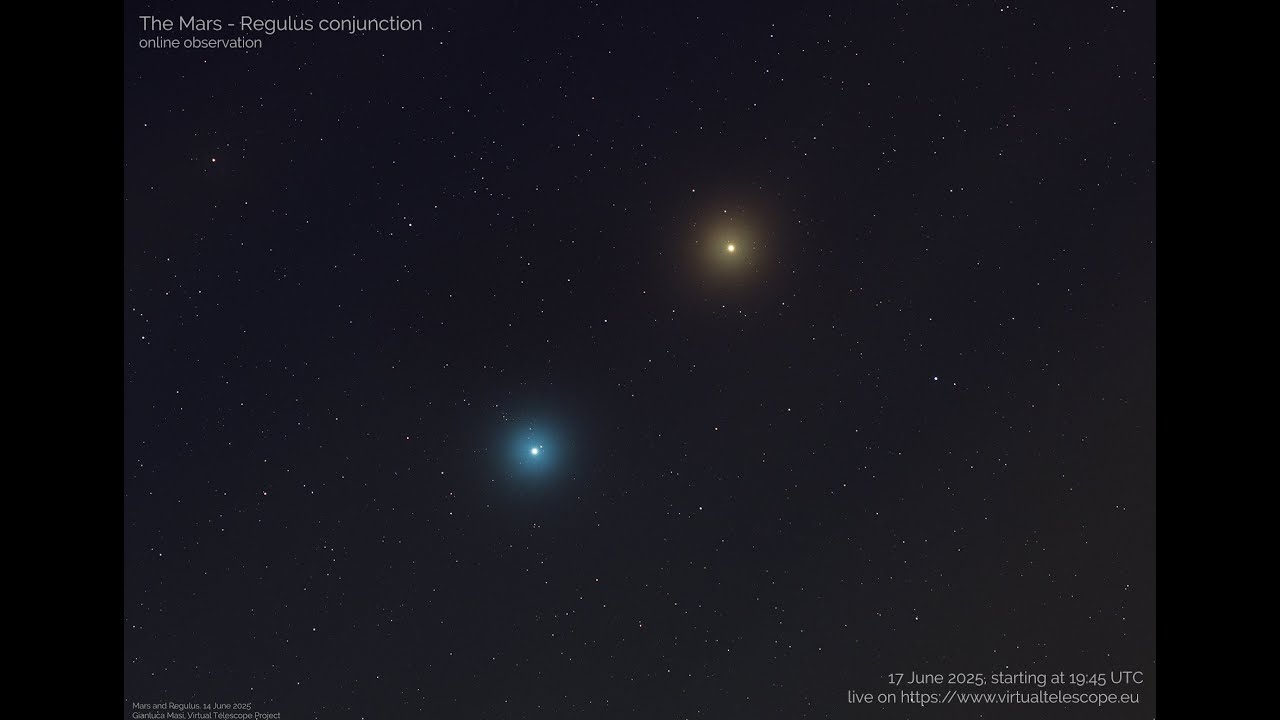Now Reading: The Diversity of Exoplanetary Environments and the Search for Signs of Life Beyond Earth
-
01
The Diversity of Exoplanetary Environments and the Search for Signs of Life Beyond Earth
The Diversity of Exoplanetary Environments and the Search for Signs of Life Beyond Earth


Red dwarf stars are more favorable for transiting planet atmosphere characterization. The main way we observe exoplanet atmospheres today is via transiting planets. The planet transit signal is the planet-to-star area ratio. The atmosphere signal is approximately the area of the planet atmosphere annulus to the background star. Both signals are 10 to 100 times larger (middle and right for two known planet systems; artist’s conception) for planets transiting M-dwarf stars compared to an Earth transiting a Sun (left; real solar image, credit NASA).
Thousands of exoplanets orbit nearby stars, showcasing a remarkable diversity in mass, size, and orbits.
With the James Webb Space Telescope now operational, we are observing exoplanet atmospheres and aiming to reach down to small, habitable-zone exoplanets in search of signs of habitability and possibly even biosignature gases.
Given the scarcity of targets, it is imperative to embrace the known diversity and consider the range of exoplanets that might host life. We review how Earth life interacts with various atmospheric gases, noting that bacteria can survive in high concentrations of gases such as H2, He, CO2, and CO.
Additionally, we consider the potential for life in alternative solvents and in cloud biospheres where rocky surfaces are excessively hot, as well as in hypothesized planetary global oceans. We highlight that life fundamentally requires metal ions for catalytic reactions, suggesting that environments without surface contact need meteoritic delivery to provide these essential elements.
Despite today’s observational limits, a suite of next-generation telescopes is being designed specifically for exoplanet studies, promising to expand our capabilities and understanding in the future.

The diversity of exoplanets. Exoplanets with measured masses (x axis) and radii (y axis) are shown as points colored by their equilibrium temperature. Colored points are those with uncertainties less than 30% and grey are planets with uncertainties between 30% and 50%. The curves are illustrative models representing planetary compositions; if a planet aligns with a curve, its interior may match that composition. Although only a subset of the thousands of detected exoplanets have measured masses and radii, those shown here illustrate the theme of exoplanet diversity as captured by wide range of masses, radii, and orbits (via their temperatures). Data from the Exoplanet Archive https://exoplanetarchive.ipac.caltech.edu/ (Akeson et al., 2013). Models from (Seager et al., 2007). Credit: L. Herrington and S. Seager.
Sara Seager, Janusz J. Petkowski, William Bains
Comments: This article is part of the theme issue ‘Chance and purpose in the evolution of biospheres’. Published in Philosophical Transactions of the Royal Society B (Philos. Trans. R. Soc. B)
Subjects: Earth and Planetary Astrophysics (astro-ph.EP)
Cite as: arXiv:2506.11690 [astro-ph.EP] (or arXiv:2506.11690v1 [astro-ph.EP] for this version)
https://doi.org/10.48550/arXiv.2506.11690
Focus to learn more
Submission history
From: Janusz Petkowski
[v1] Fri, 13 Jun 2025 11:37:49 UTC (1,033 KB)
https://arxiv.org/abs/2506.11690
Astrobiology,
Stay Informed With the Latest & Most Important News
Previous Post
Next Post
-
 012024 in Review: Highlights from NASA in Silicon Valley
012024 in Review: Highlights from NASA in Silicon Valley -
 02Panasonic Leica Summilux DG 15mm f/1.7 ASPH review
02Panasonic Leica Summilux DG 15mm f/1.7 ASPH review -
 03How New NASA, India Earth Satellite NISAR Will See Earth
03How New NASA, India Earth Satellite NISAR Will See Earth -
 04From Polymerization-Enabled Folding and Assembly to Chemical Evolution: Key Processes for Emergence of Functional Polymers in the Origin of Life
04From Polymerization-Enabled Folding and Assembly to Chemical Evolution: Key Processes for Emergence of Functional Polymers in the Origin of Life -
 05And Thus Begins A New Year For Life On Earth
05And Thus Begins A New Year For Life On Earth -
 06Astronomy Activation Ambassadors: A New Era
06Astronomy Activation Ambassadors: A New Era -
07SpaceX launch surge helps set new global launch record in 2024



















